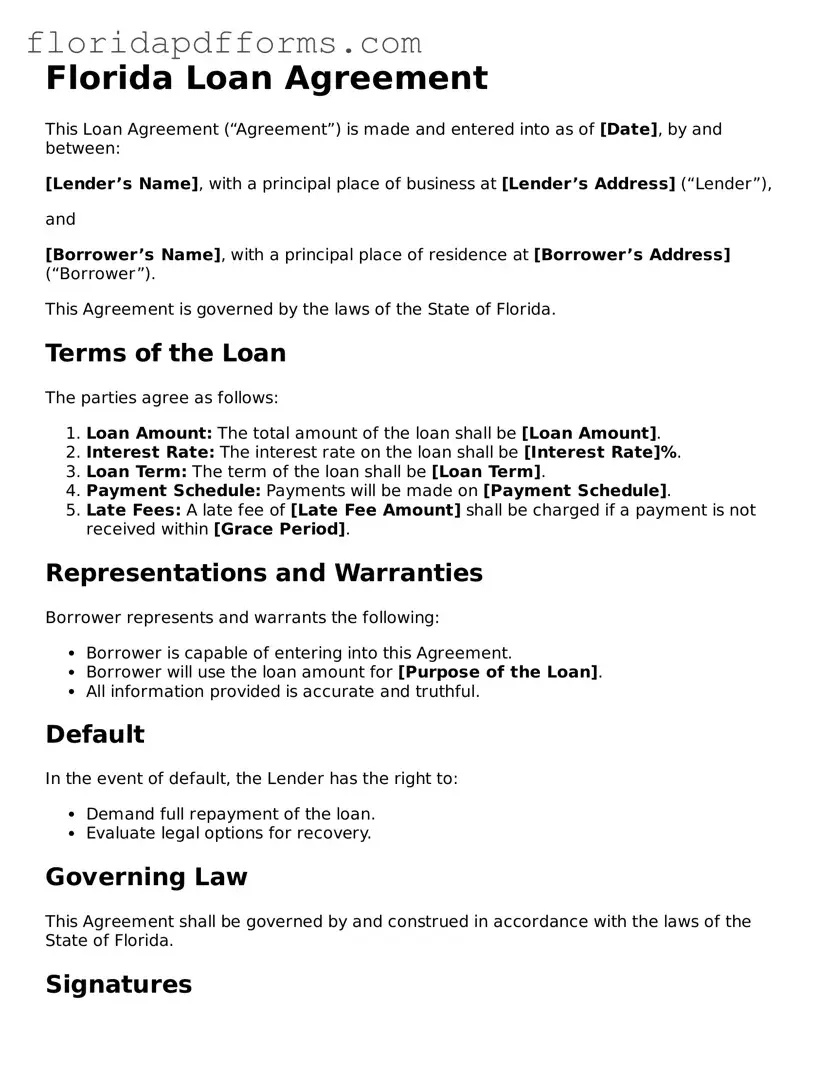Florida Loan Agreement
This Loan Agreement (“Agreement”) is made and entered into as of [Date], by and between:
[Lender’s Name], with a principal place of business at [Lender’s Address] (“Lender”),
and
[Borrower’s Name], with a principal place of residence at [Borrower’s Address] (“Borrower”).
This Agreement is governed by the laws of the State of Florida.
Terms of the Loan
The parties agree as follows:
- Loan Amount: The total amount of the loan shall be [Loan Amount].
- Interest Rate: The interest rate on the loan shall be [Interest Rate]%.
- Loan Term: The term of the loan shall be [Loan Term].
- Payment Schedule: Payments will be made on [Payment Schedule].
- Late Fees: A late fee of [Late Fee Amount] shall be charged if a payment is not received within [Grace Period].
Representations and Warranties
Borrower represents and warrants the following:
- Borrower is capable of entering into this Agreement.
- Borrower will use the loan amount for [Purpose of the Loan].
- All information provided is accurate and truthful.
Default
In the event of default, the Lender has the right to:
- Demand full repayment of the loan.
- Evaluate legal options for recovery.
Governing Law
This Agreement shall be governed by and construed in accordance with the laws of the State of Florida.
Signatures
By signing below, both parties confirm that they agree to the terms of this Loan Agreement.
Lender Signature: _______________________________ Date: ________________
Borrower Signature: _____________________________ Date: ________________
